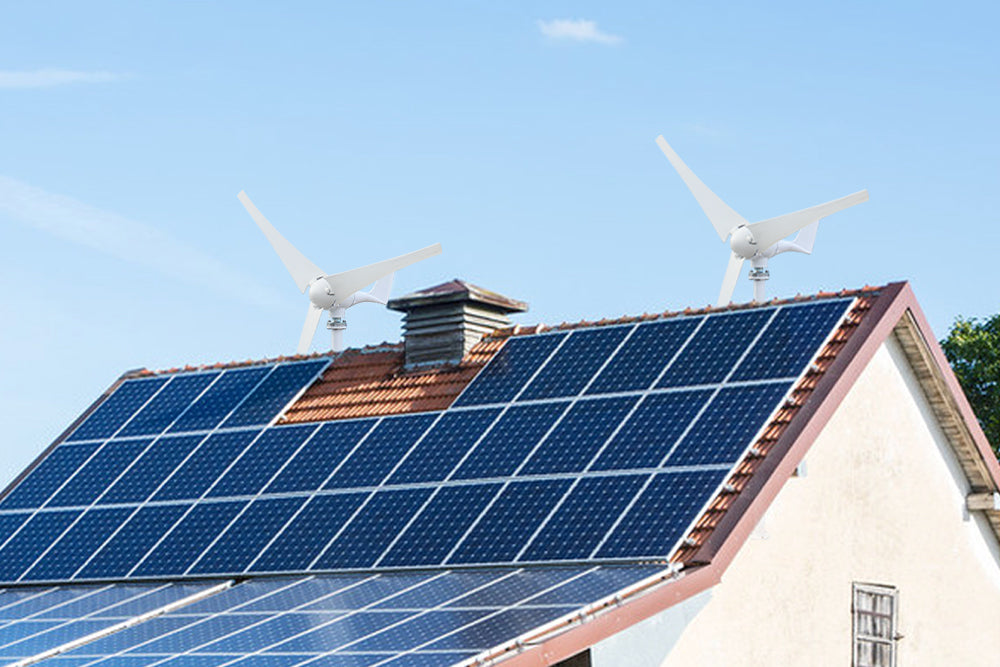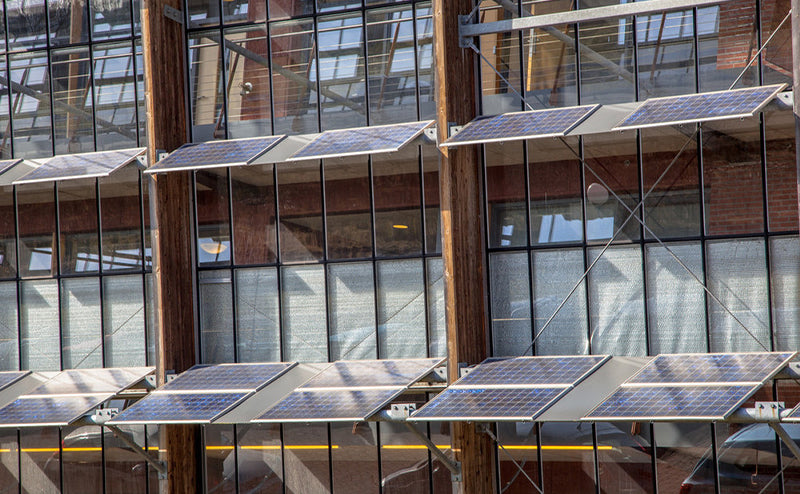Thinner panels may be the next chapter of solar technology, and you can try them out now.
If you're an environmentally conscious homeowner or business owner interested in reducing your carbon footprint, you've probably considered solar panels.
The conventional solar panels most residential solar companies install are made of monocrystalline silicon solar cells and are rigid rectangles, typically installed on sturdy rooftop racks. While solar panels have been around for decades, solar technologies continue to advance, improving standard technology and spawning variations.
One such variation is flexible, or thin film, solar technologies that allow for all sorts of fun applications like photovoltaics stuck to windows, on RVs and just about any other surface. These technologies are here today, and although it can be tough to compete with cheap, conventional panels produced at an astounding scale, they're already operating today in places as disparate as homes on Earth and rovers on Mars. They might just be perfect for your needs.
Can solar panels save you money?
Interested in understanding the impact solar can have on your home? Enter some basic information below, and we’ll instantly provide a free estimate of your energy savings.
Here's what you need to know and how to determine if they're worth a closer look.
What are flexible solar panels and how do they work?
Flexible solar panels and conventional solar panels are both made of material that absorb light and produce electricity.
The clear distinction between those two types of solar panels is thickness. In thin-film solar panels, the layers of photovoltaic materials are much thinner and, therefore, sometimes flexible.
Matthew Reese, a researcher at the National Renewable Energy Laboratory in Colorado explained thin film panels don't have to be flexible, but materials tend to become flexible the thinner they get.
"Any technology can be made flexible. Part of the question is how flexible," Reese said. "You can also make them foldable."
A number of technologies harnessing different materials have been used over the decades to develop thin film or flexible solar modules, including amorphous silicon, copper indium gallium selenide, cadmium telluride and gallium arsenide. Newer, emerging technologies that could have flexible applications in the future include perovskite, organic and quantum dot photovoltaics.
There are also products on the market that use very thin monocrystalline silicon modules similar to rigid rooftop panels but with some limited amount of flexibility.
What are the benefits of flexible solar panels?
The clear advantage of flexible solar panels is the ability to install them on a wider variety of surfaces and locations.
"Something we say around NREL is 'PV everywhere' -- if you could have a flexible, roll-out PV technology; you can imagine lots of places to put this stuff," another NREL researcher, Lance Wheeler, said.
You could imagine flexible photovoltaics covering a car or any part of a building, including windows. Some solar tiles make use of thin films for rooftops.
Thinner panels are also inherently lighter, which opens up applications like putting them on drones and airplanes and hanging them from hikers' backpacks. Certain thin-film technologies also operate better under high-heat conditions, making them preferable for use in space and certain desert locales.
Thin-film technology struggles to compete with rigid PV on both efficiency and price, but has the potential to surpass those widespread rooftop panels on both counts at some point in the future.

What are the downsides of flexible solar panels?
Today, flexible panels compete against a massive solar industry that mostly pumps out rigid silicon-based rooftop panels at ever cheaper costs. Some flexible solar panels can already beat those glass panels in terms of efficiency by a wide margin, but at a significant cost.
For homeowners, the industry's focus remains on those big glass rectangles.
"There's lots of other flavors of PV, and a lot of them aren't very widespread when it comes to residential," Wheeler said.
The less expensive of the thin film technologies tend to be less efficient than a conventional rooftop panel, while still costing more than a rigid silicon-based module. There can also be concerns over durability with flexible panels, and some materials used in their production, like cadmium, are extremely toxic.
Thin-film solar panel efficiency varies depending on the type of material but can be expected to be between 7% and 18%. Conventional panel efficiencies can reach 25%, but commercially available panels typically range from 18% to 22%
Because of their lower efficiencies, current thin-film systems require more roof space than conventional panels, meaning they won't be suitable for a large number of homes.
Pros and cons of flexible solar panels
|
Pros |
Cons |
|
Lower carbon footprint due to less semiconductor material |
May contain cadmium -- a probable carcinogen |
|
Easy and inexpensive installation |
Lower efficiency than conventional panels |
|
Great for portable applications (RVs, buses, boats) |
More roof space needed for same energy capacity |
|
Lightweight |
Limited availability |
|
|
Shorter lifespan than conventional panels |
When should you install flexible solar
Thin-film solar panels are still limited in availability, but as solar technologies continue to advance, these panels could take off in popularity.
If you have a larger home or business with adequate roof space, thin-film panels may be the most efficient and effective way to achieve your solar goals and save money on energy costs. They may also be an adequate energy solution for portable use on things like RVs, buses or boat rooftops.
Flexible solar panels may also be worth considering in instances when regular, rigid panels on a rooftop or ground rack won't be possible to install for some reason, like a curved facade or vehicle roof.
In such a case, using a flexible module is not only likely to be more aesthetically pleasing, but it will allow your panel to have multiple lines of sight to the sun, likely producing more power over the course of the day and year.
In the future, flexible panels atop an electric vehicle could be a way to extend your car's range.
Finally, if you live in a desert area where heat and sunlight can be extreme, it could be worth exploring whether thin-film technology might actually operate more efficiently for you.
For more information, please click here: https://isolarparts.com
Twitter: Solarparts Instagram: Solarparts
Tumblr: Solarparts Pinterest: Solarparts
Facebook: Shenzhen Solarparts Inc
Email address: Philip@isolarparts.com




